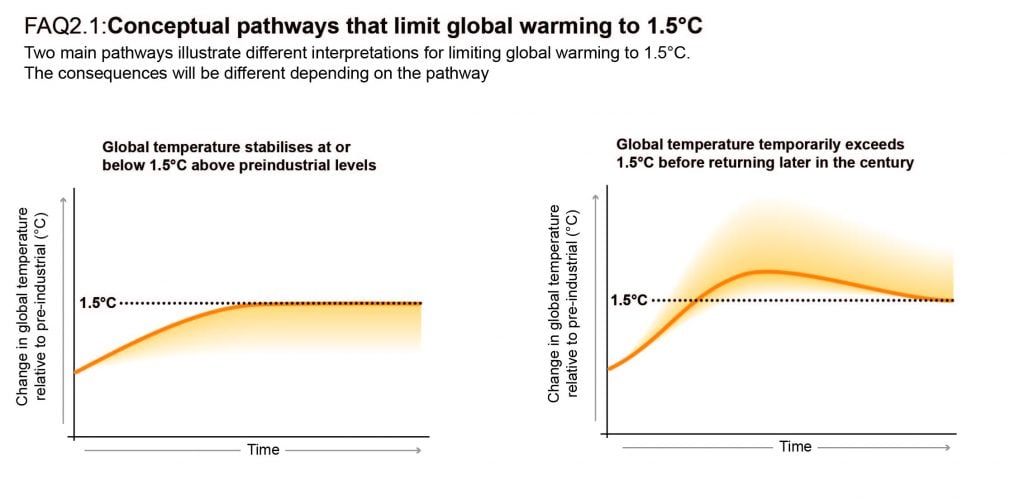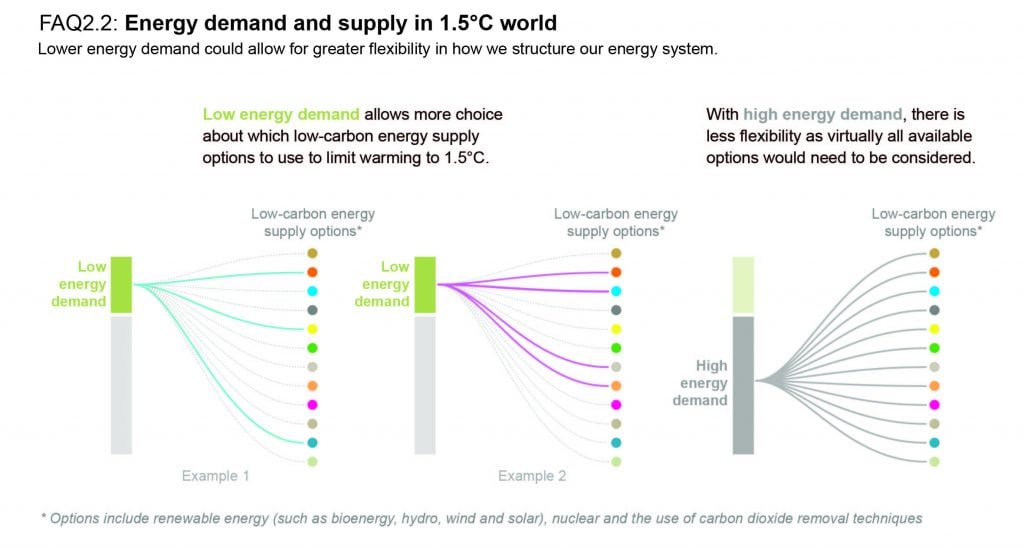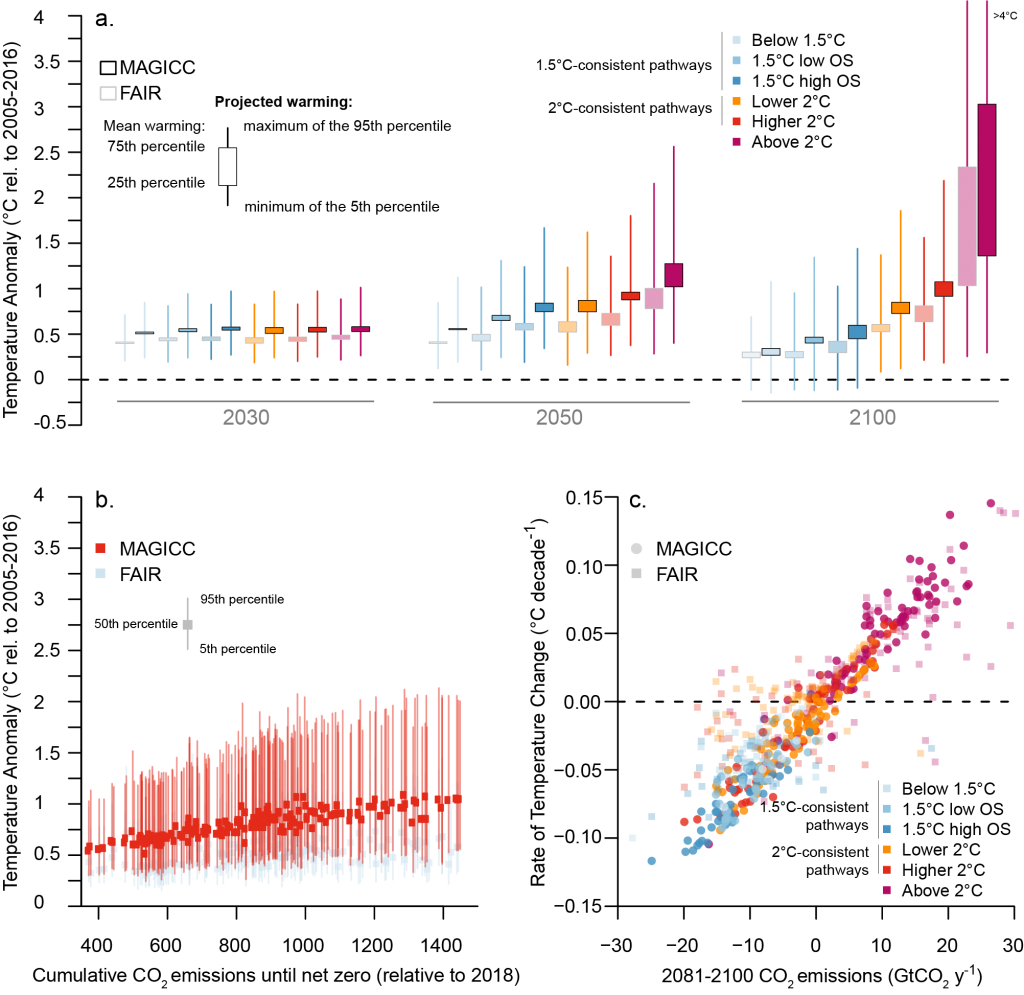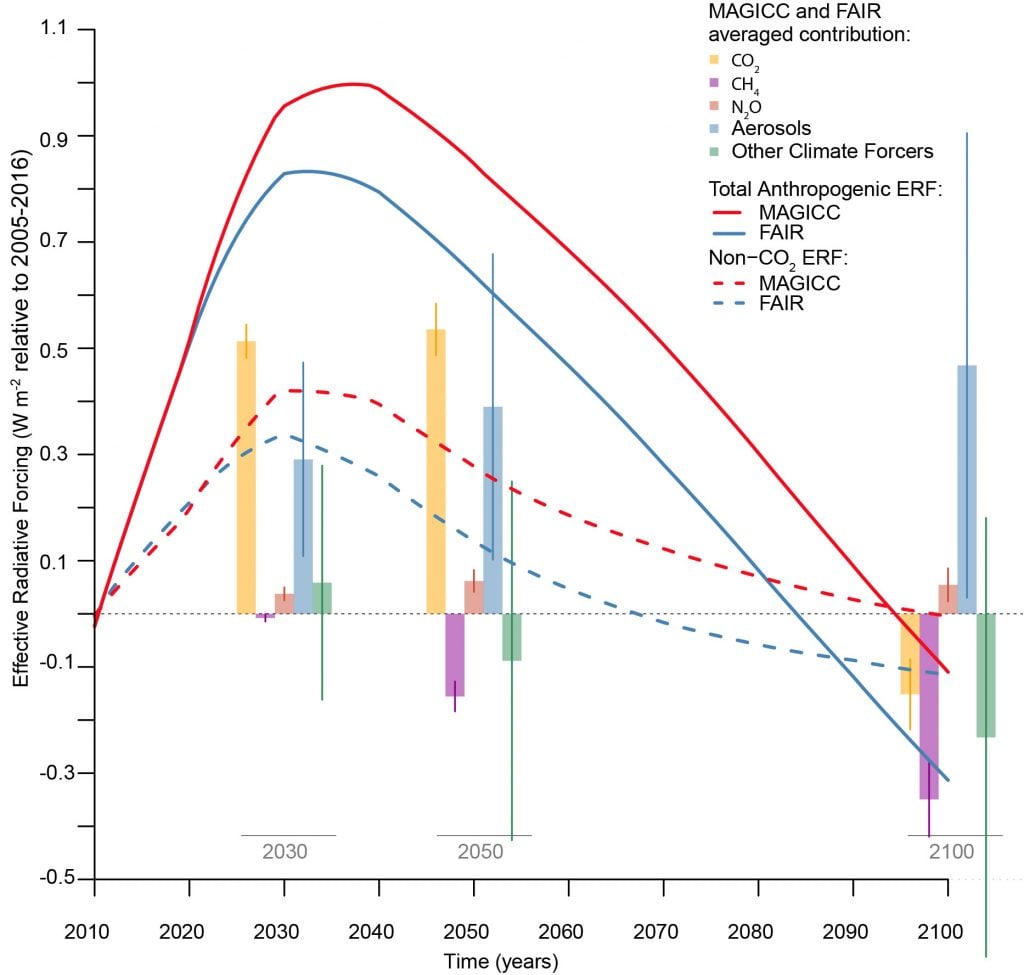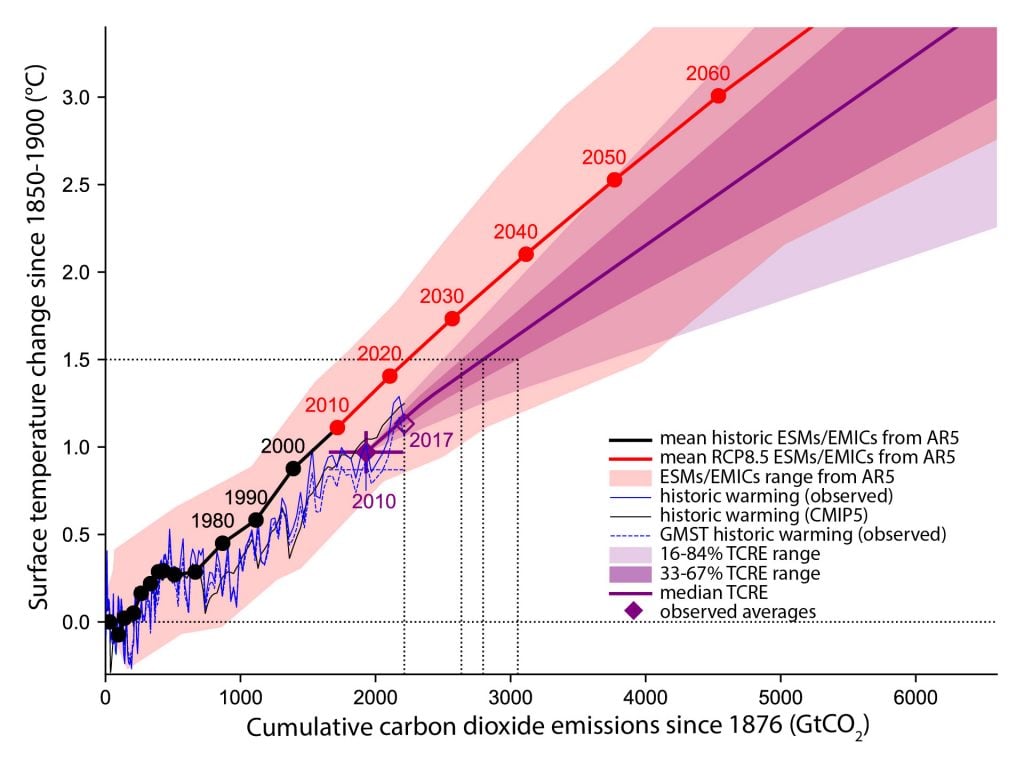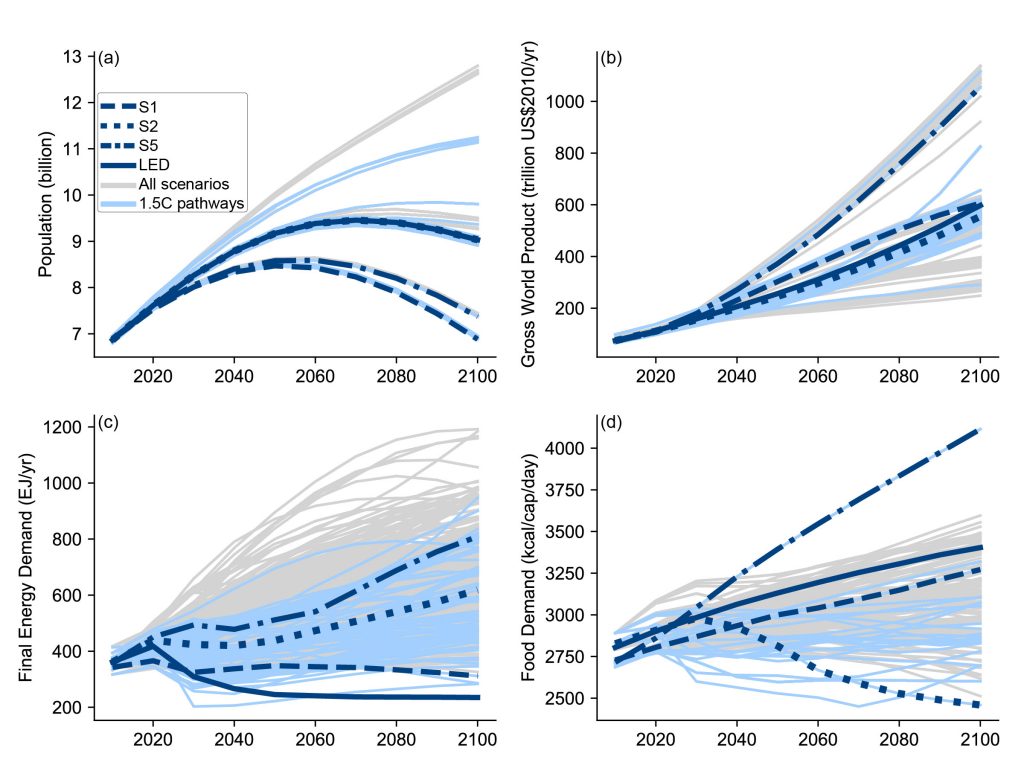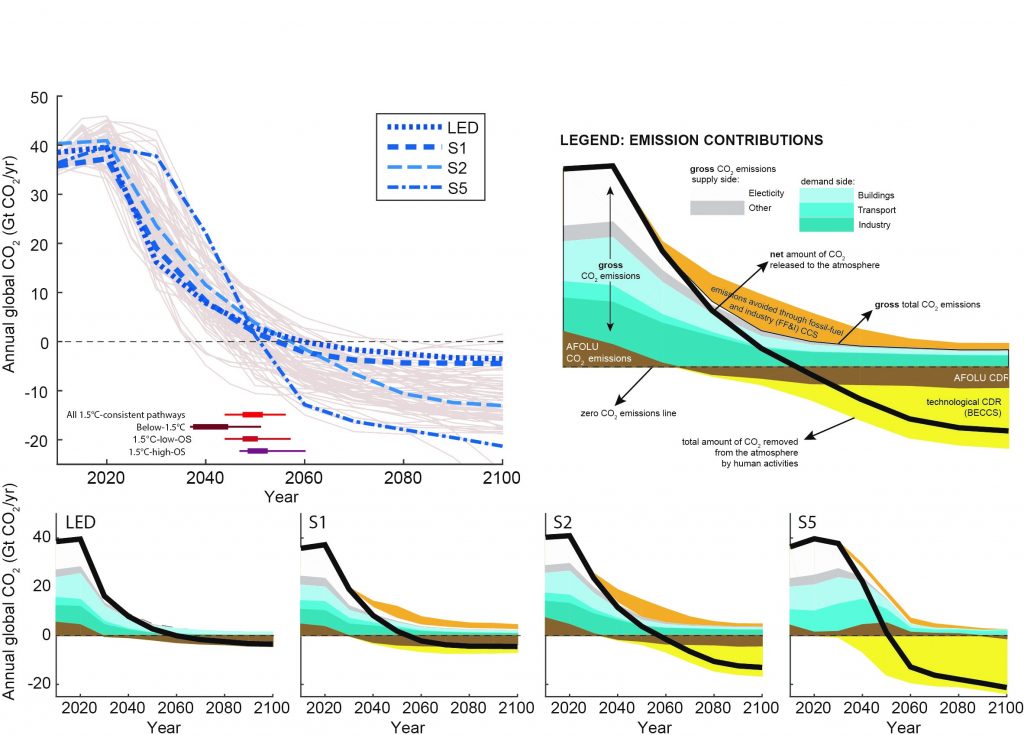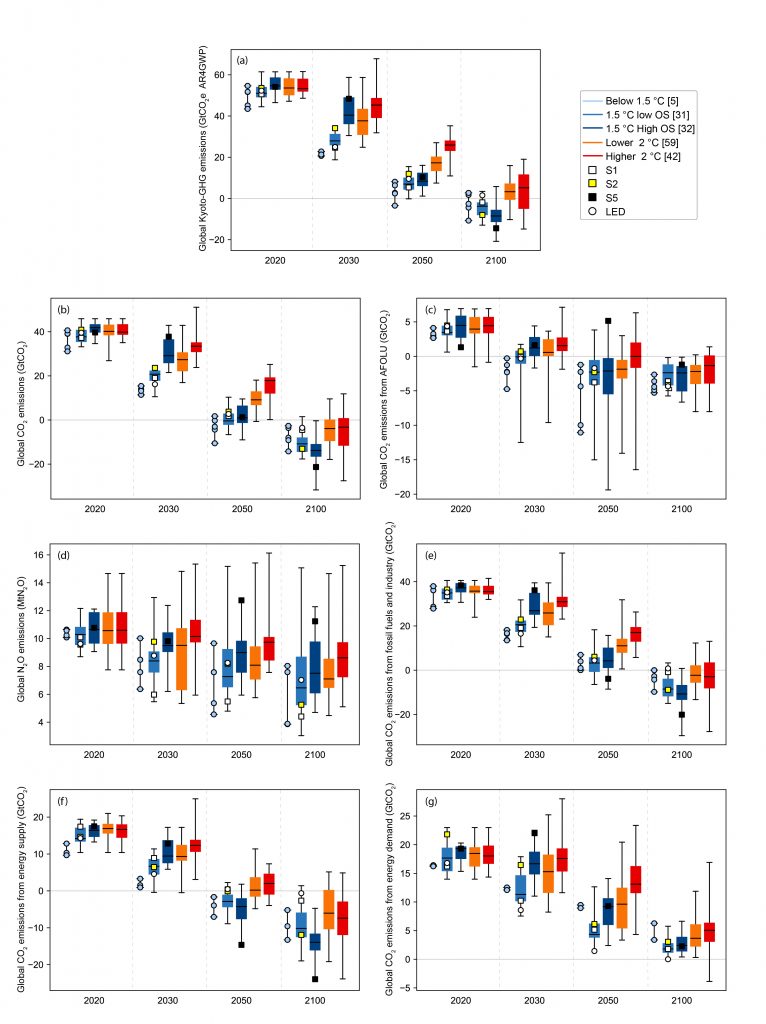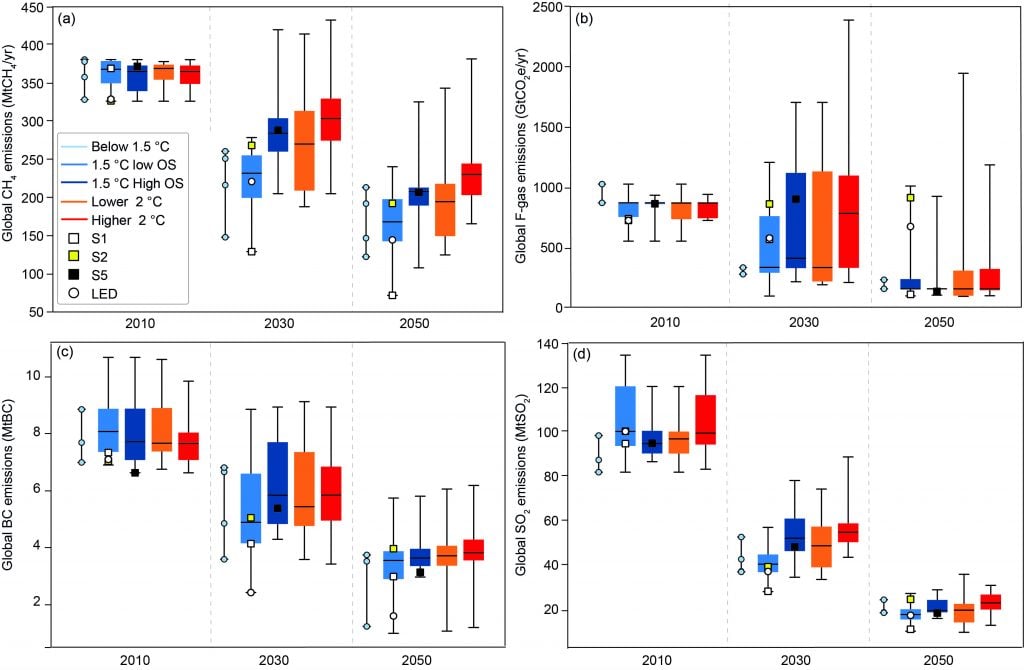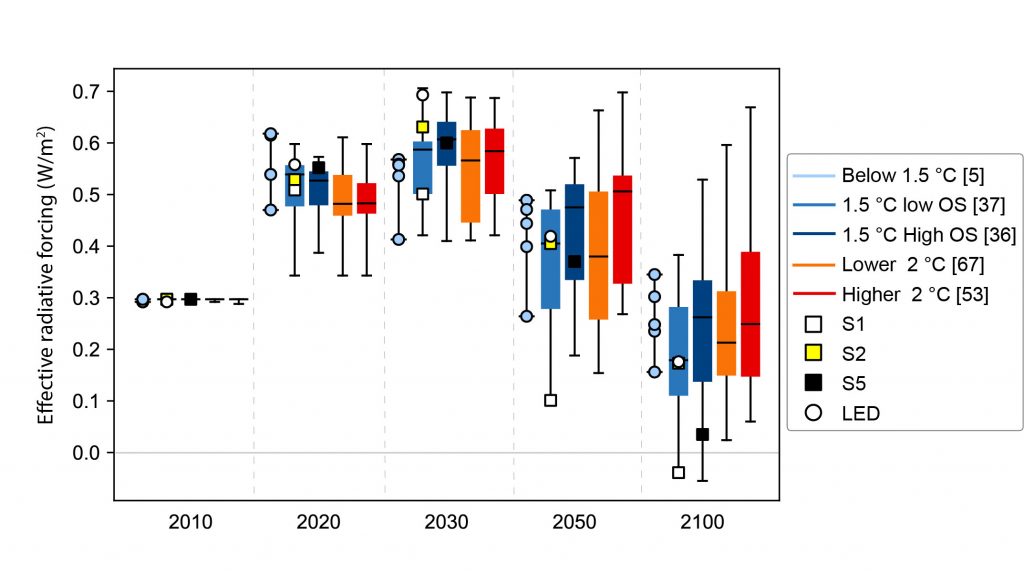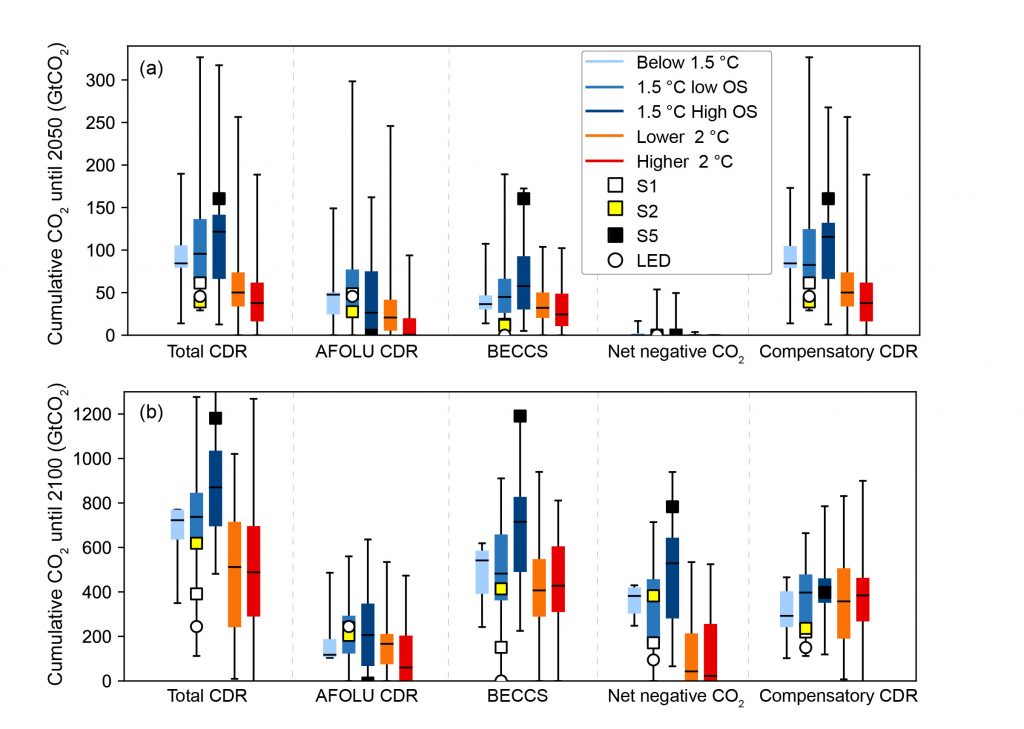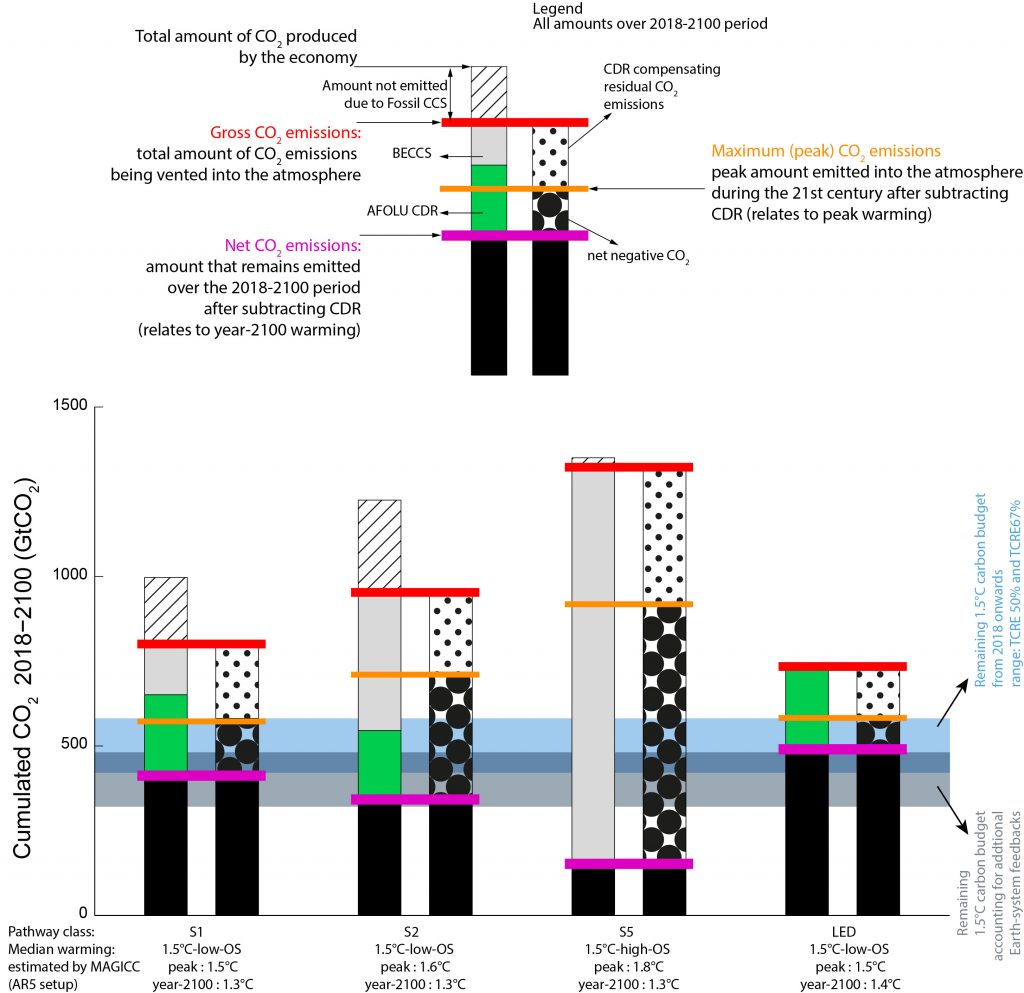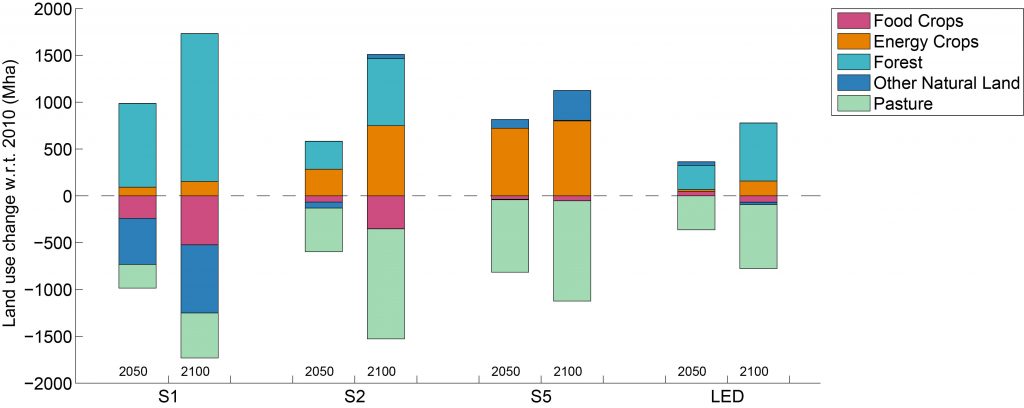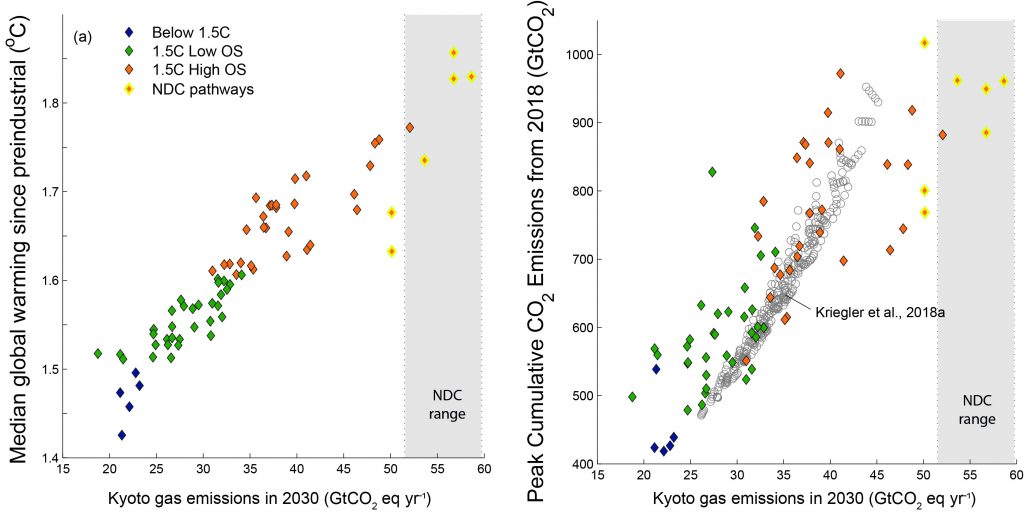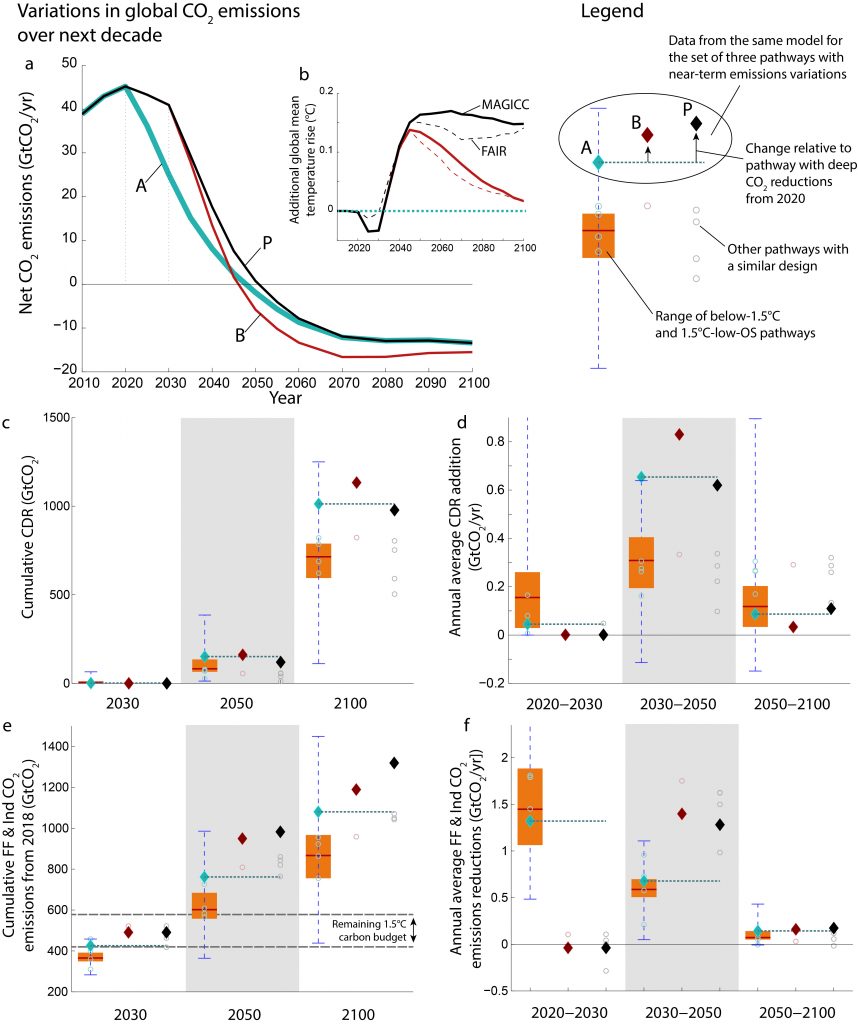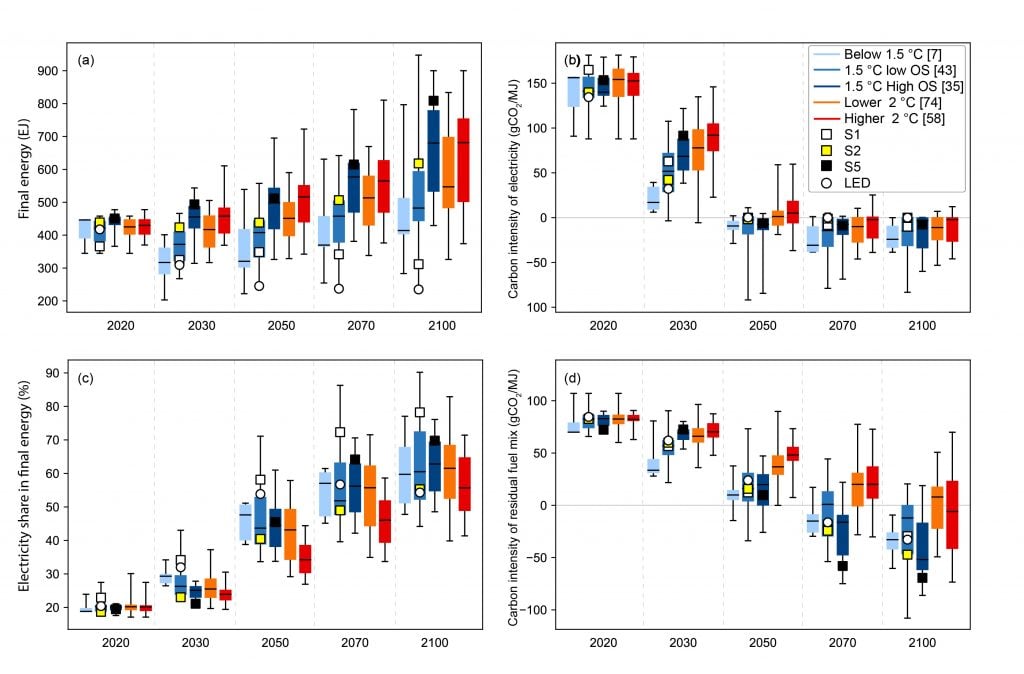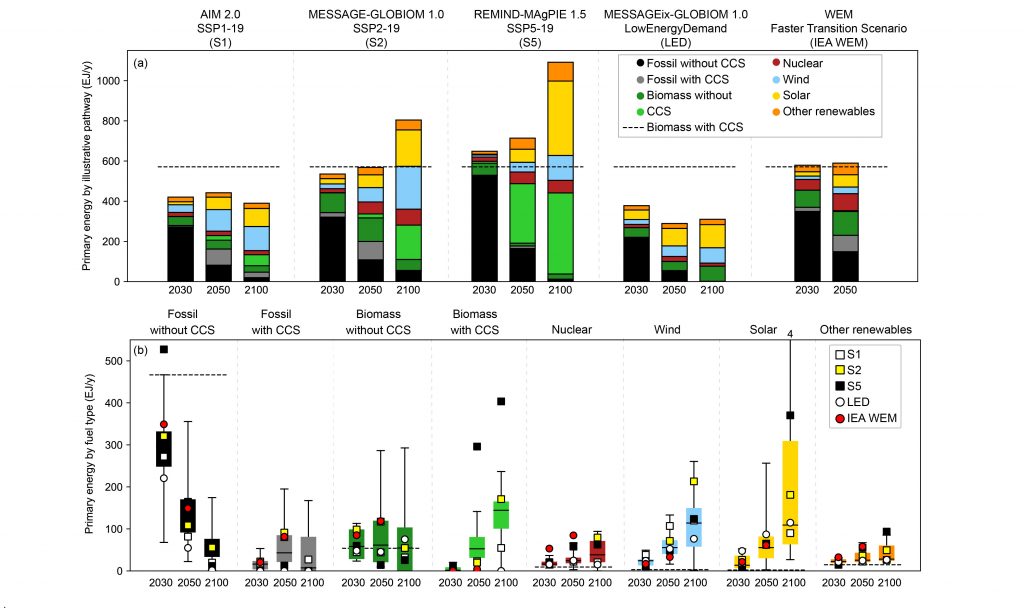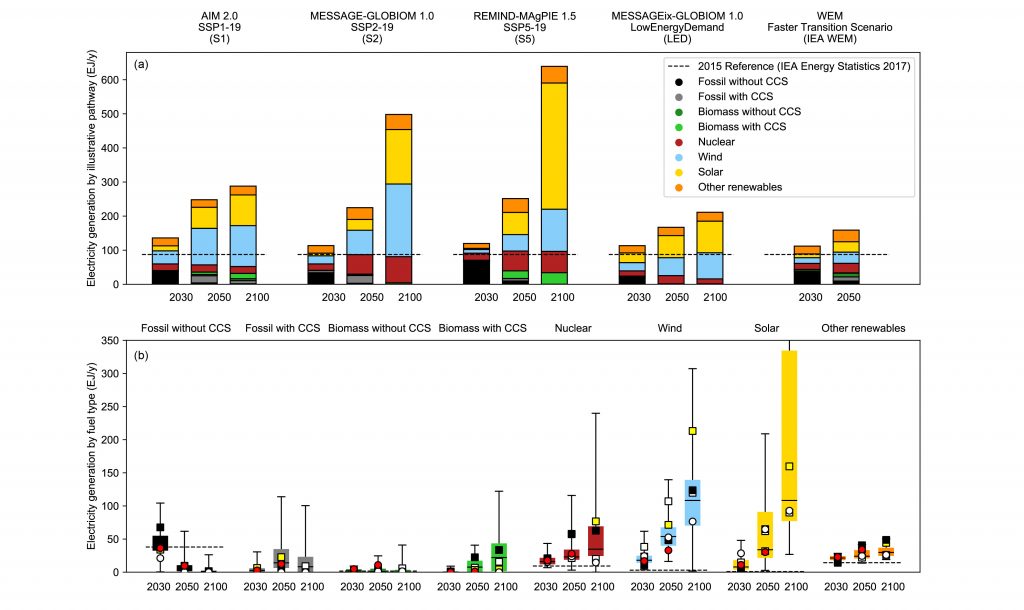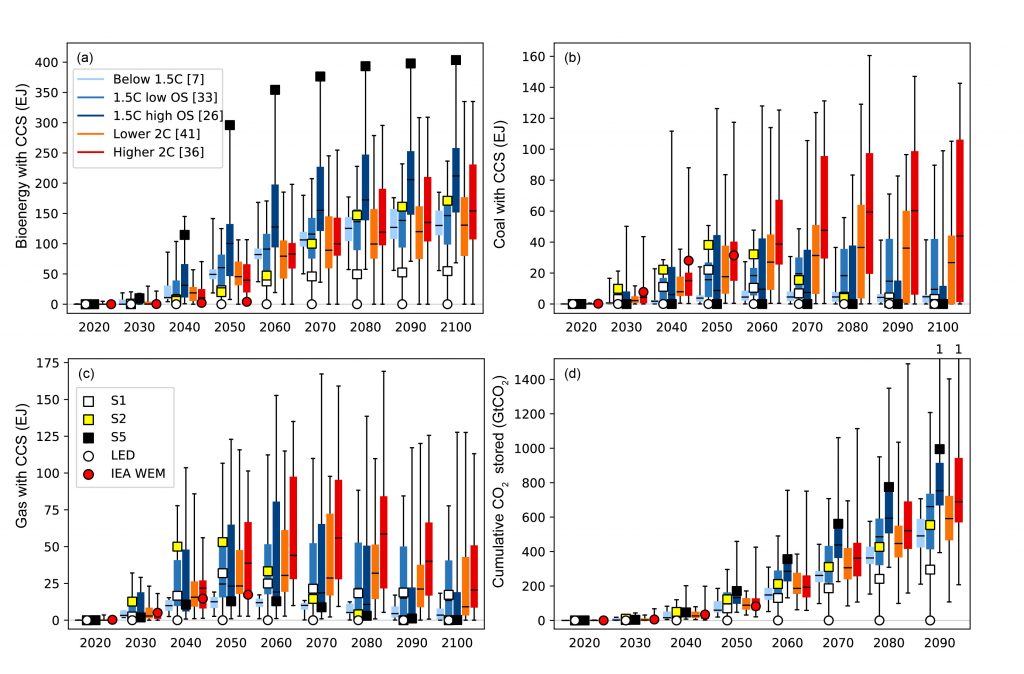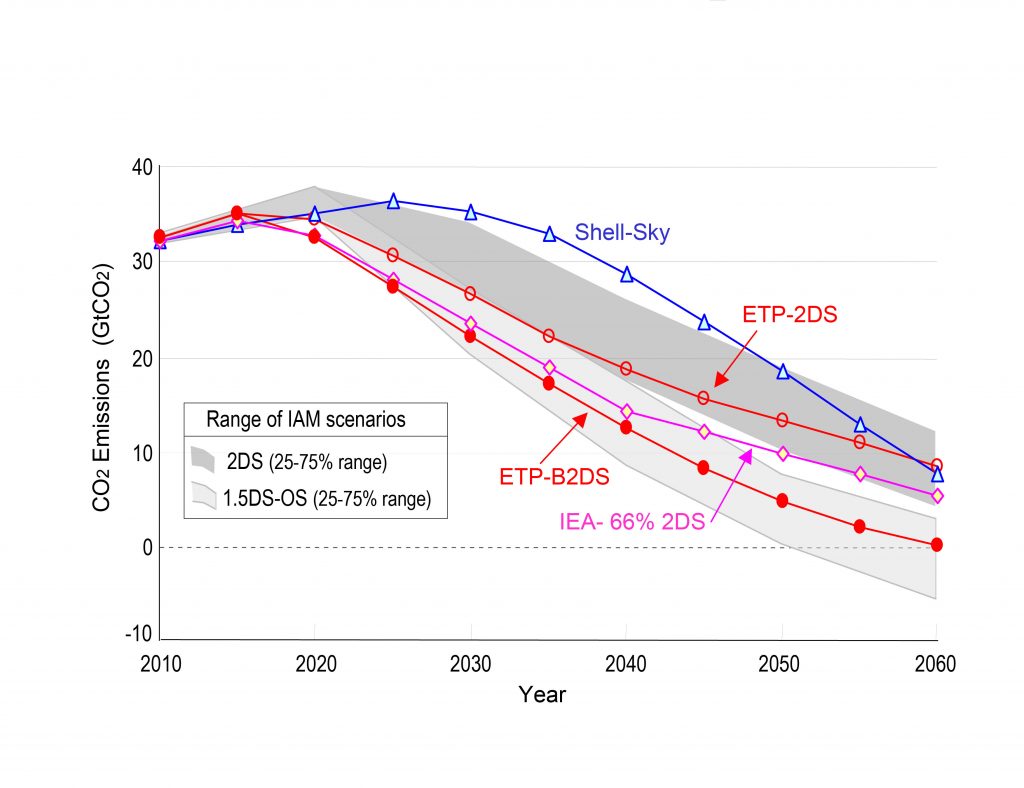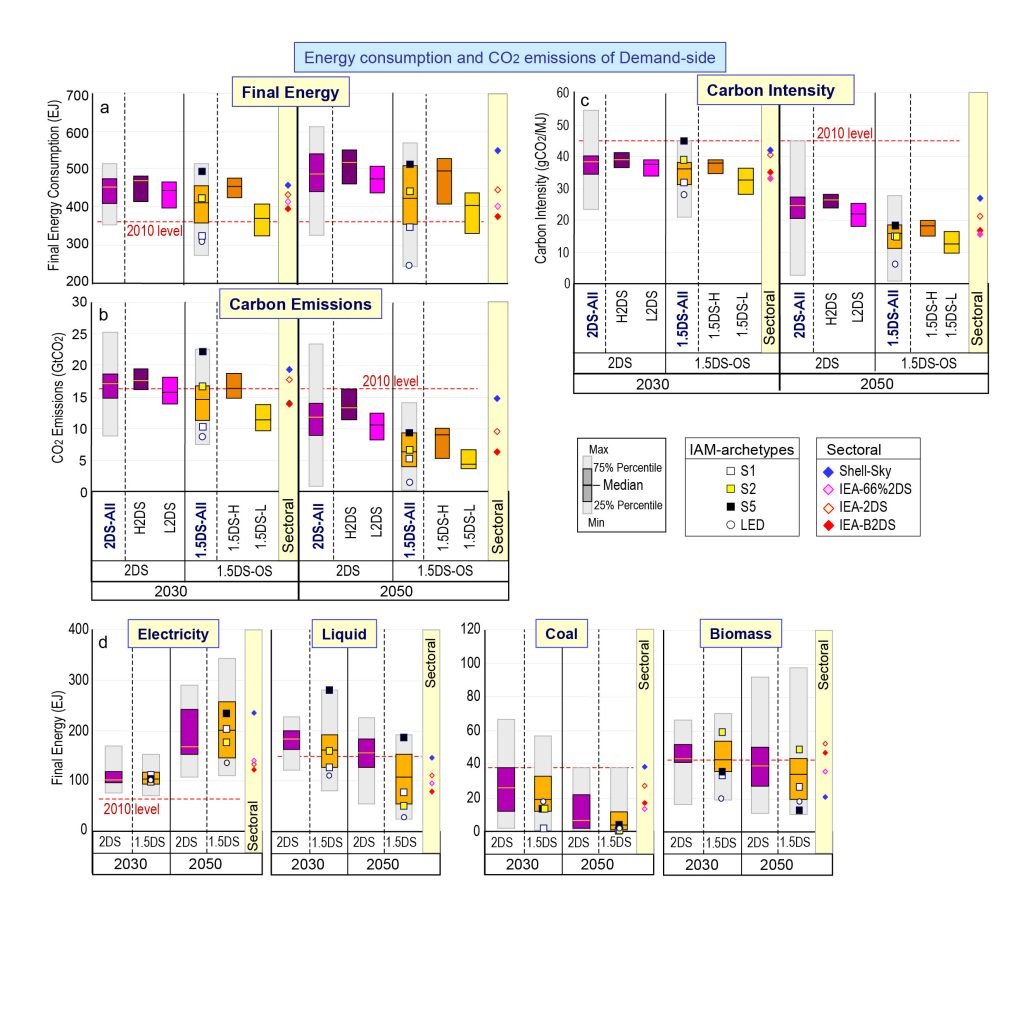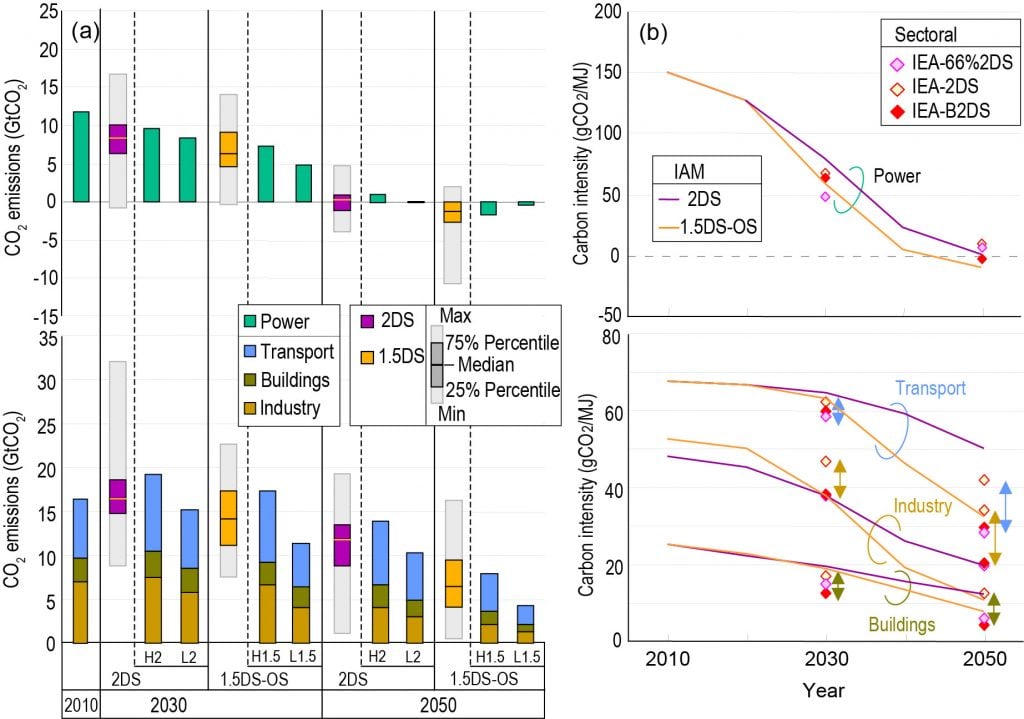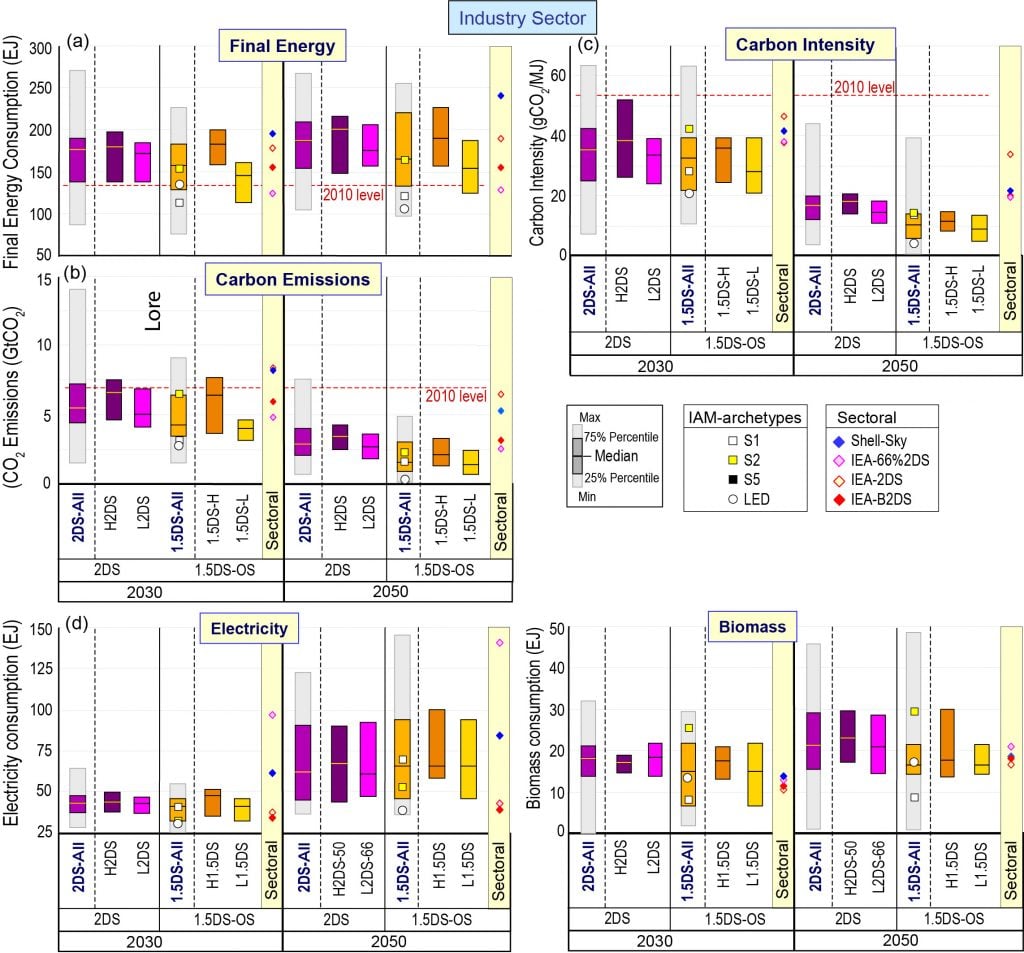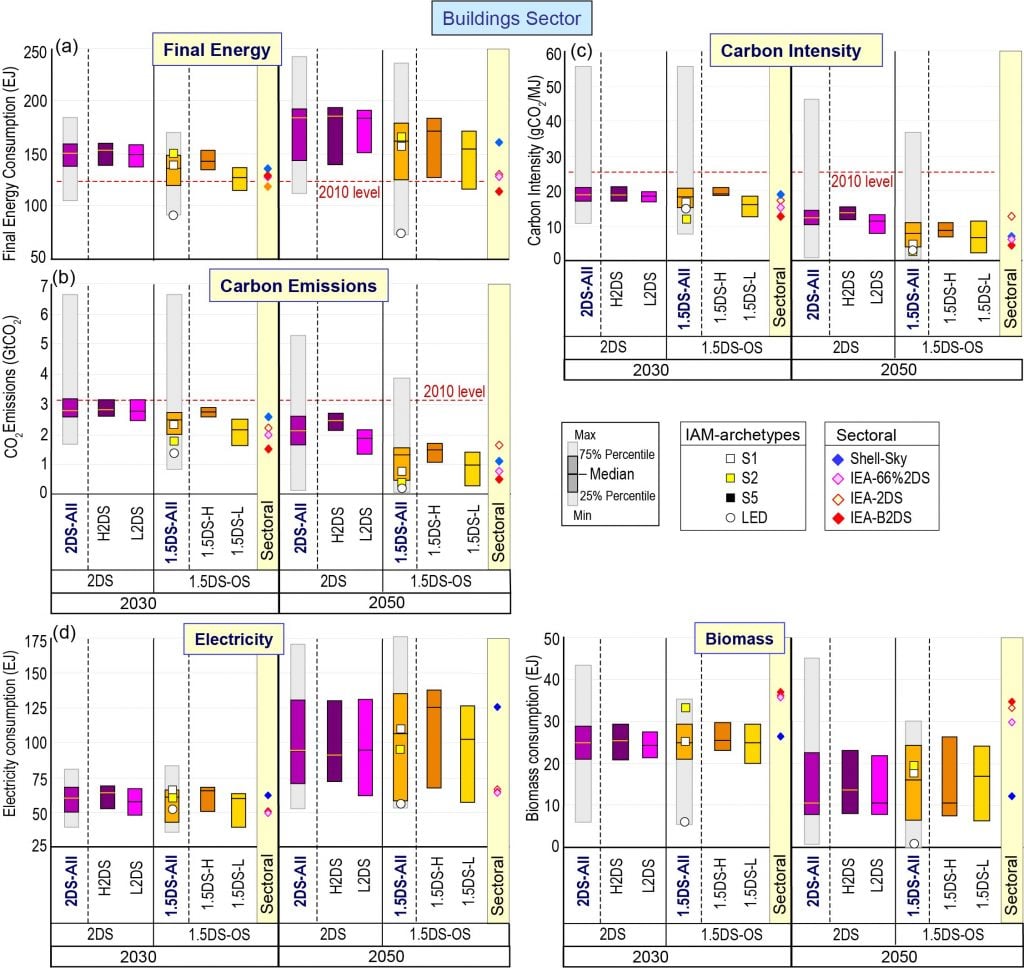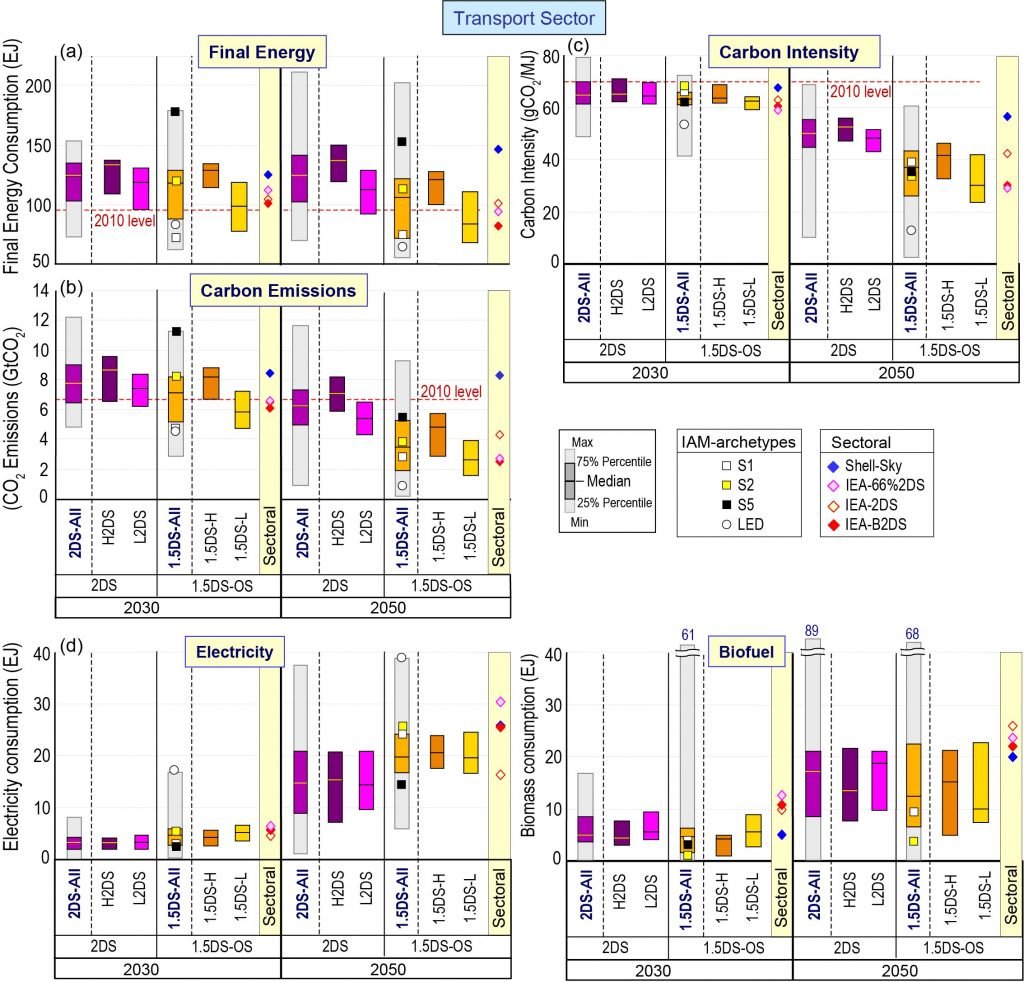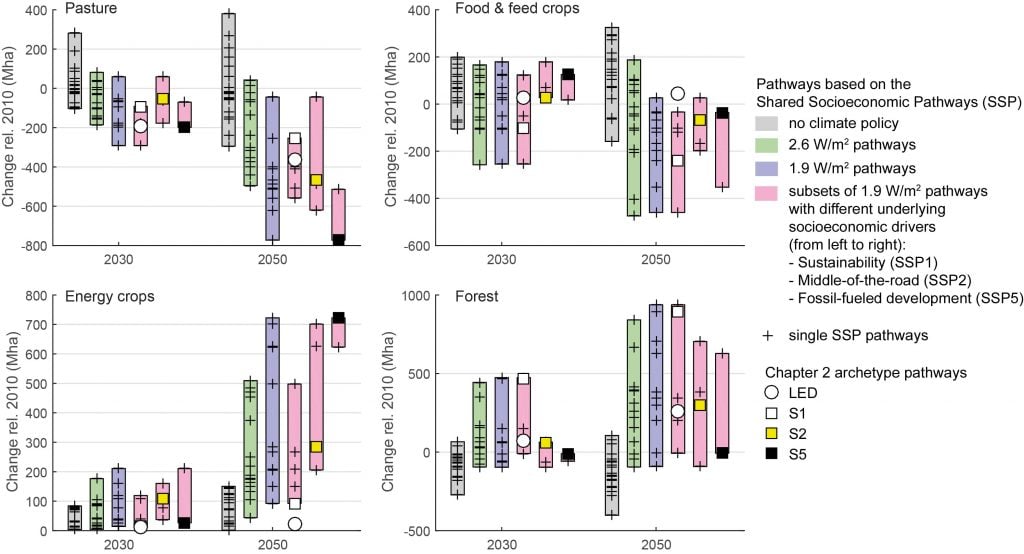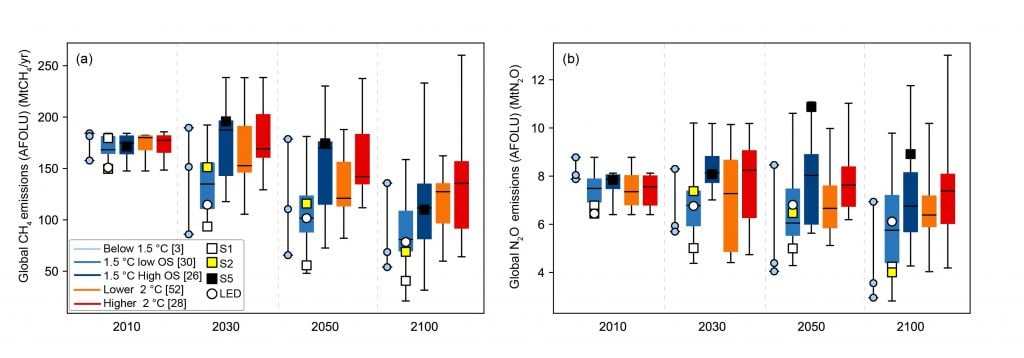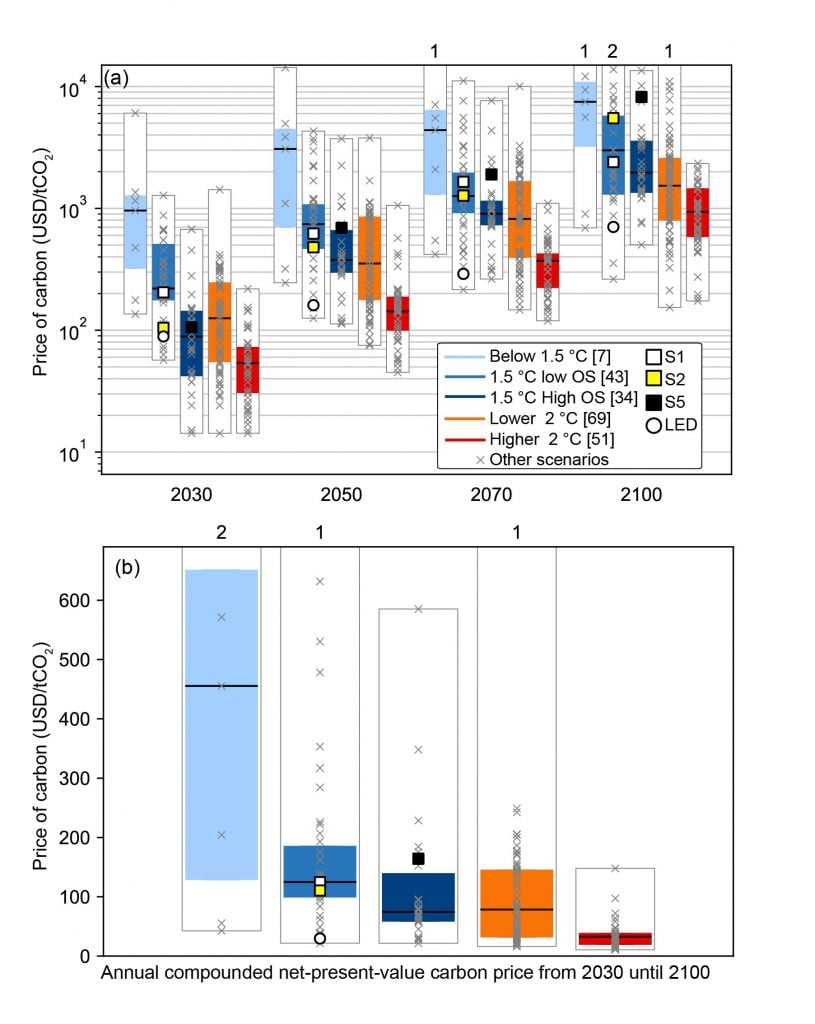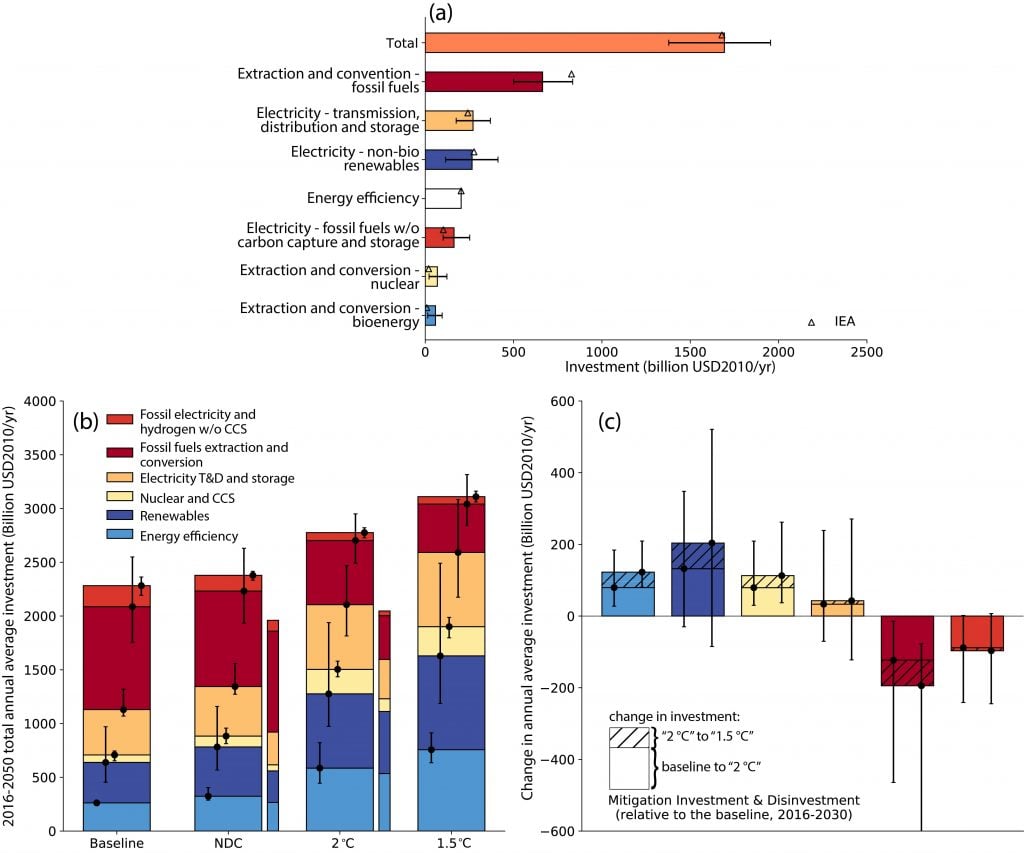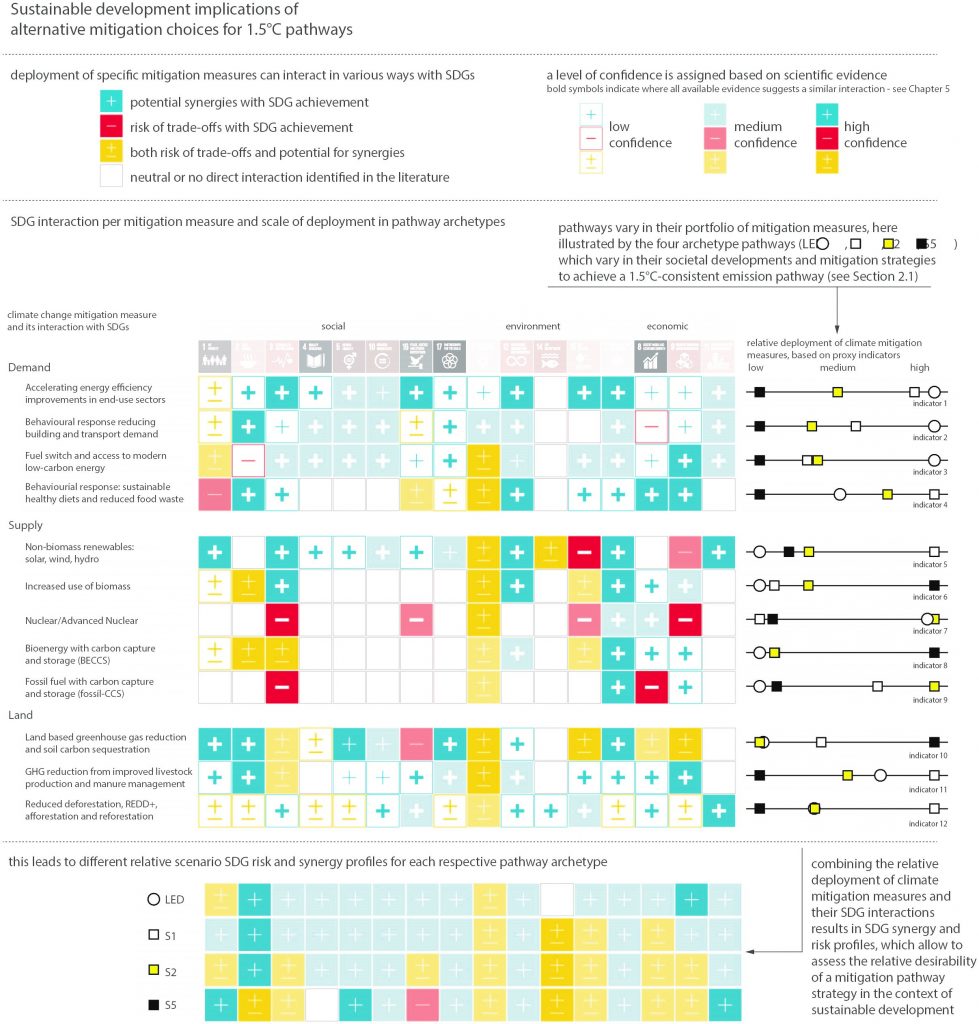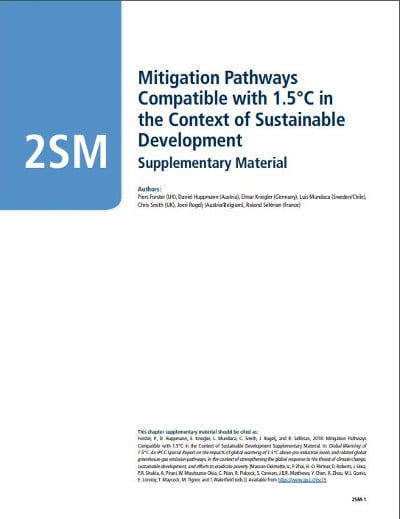ES
Executive Summary
This chapter assesses mitigation pathways consistent with limiting warming to 1.5°C above pre-industrial levels. In doing so, it explores the following key questions: What role do CO2 and non-CO2 emissions play? {2.2, 2.3, 2.4, 2.6} To what extent do 1.5°C pathways involve overshooting and returning below 1.5°C during the 21st century? {2.2, 2.3} What are the implications for transitions in energy, land use and sustainable development? {2.3, 2.4, 2.5} How do policy frameworks affect the ability to limit warming to 1.5°C? {2.3, 2.5} What are the associated knowledge gaps? {2.6}
The assessed pathways describe integrated, quantitative evolutions of all emissions over the 21st century associated with global energy and land use and the world economy. The assessment is contingent upon available integrated assessment literature and model assumptions, and is complemented by other studies with different scope, for example, those focusing on individual sectors. In recent years, integrated mitigation studies have improved the characterizations of mitigation pathways. However, limitations remain, as climate damages, avoided impacts, or societal co-benefits of the modelled transformations remain largely unaccounted for, while concurrent rapid technological changes, behavioural aspects, and uncertainties about input data present continuous challenges. (high confidence) {2.1.3, 2.3, 2.5.1, 2.6, Technical Annex 2}
The Chances of Limiting Warming to 1.5°C and the Requirements for Urgent Action
Pathways consistent with 1.5°C of warming above pre-industrial levels can be identified under a range of assumptions about economic growth, technology developments and lifestyles. However, lack of global cooperation, lack of governance of the required energy and land transformation, and increases in resource-intensive consumption are key impediments to achieving 1.5°C pathways. Governance challenges have been related to scenarios with high inequality and high population growth in the 1.5°C pathway literature. {2.3.1, 2.3.2, 2.5}
Under emissions in line with current pledges under the Paris Agreement (known as Nationally Determined Contributions, or NDCs), global warming is expected to surpass 1.5°C above pre-industrial levels, even if these pledges are supplemented with very challenging increases in the scale and ambition of mitigation after 2030 (high confidence). This increased action would need to achieve net zero CO2 emissions in less than 15 years. Even if this is achieved, temperatures would only be expected to remain below the 1.5°C threshold if the actual geophysical response ends up being towards the low end of the currently estimated uncertainty range. Transition challenges as well as identified trade-offs can be reduced if global emissions peak before 2030 and marked emissions reductions compared to today are already achieved by 2030 {2.2, 2.3.5, Cross-Chapter Box 11 in Chapter 4}.
Limiting warming to 1.5°C depends on greenhouse gas (GHG) emissions over the next decades, where lower GHG emissions in 2030 lead to a higher chance of keeping peak warming to 1.5°C (high confidence). Available pathways that aim for no or limited (less than 0.1°C) overshoot of 1.5°C keep GHG emissions in 2030 to 25–30 GtCO2e yr−1 in 2030 (interquartile range). This contrasts with median estimates for current unconditional NDCs of 52–58 GtCO2e yr−1 in 2030. Pathways that aim for limiting warming to 1.5°C by 2100 after a temporary temperature overshoot rely on large-scale deployment of carbon dioxide removal (CDR) measures, which are uncertain and entail clear risks. In model pathways with no or limited overshoot of 1.5°C, global net anthropogenic CO2 emissions decline by about 45% from 2010 levels by 2030 (40–60% interquartile range), reaching net zero around 2050 (2045–2055 interquartile range).1 For limiting global warming to below 2°C with at least 66% probability CO2 emissions are projected to decline by about 25% by 2030 in most pathways (10–30% interquartile range) and reach net zero around 2070 (2065–2080 interquartile range). {2.2, 2.3.3, 2.3.5, 2.5.3, Cross-Chapter Boxes 6 in Chapter 3 and 9 in Chapter 4, 4.3.7}
Limiting warming to 1.5°C implies reaching net zero CO2 emissions globally around 2050 and concurrent deep reductions in emissions of non-CO2 forcers, particularly methane (high confidence). Such mitigation pathways are characterized by energy-demand reductions, decarbonization of electricity and other fuels, electrification of energy end use, deep reductions in agricultural emissions, and some form of CDR with carbon storage on land or sequestration in geological reservoirs. Low energy demand and low demand for land- and GHG-intensive consumption goods facilitate limiting warming to as close as possible to 1.5°C. {2.2.2, 2.3.1, 2.3.5, 2.5.1, Cross-Chapter Box 9 in Chapter 4}.
In comparison to a 2°C limit, the transformations required to limit warming to 1.5°C are qualitatively similar but more pronounced and rapid over the next decades (high confidence). 1.5°C implies very ambitious, internationally cooperative policy environments that transform both supply and demand (high confidence). {2.3, 2.4, 2.5}
Policies reflecting a high price on emissions are necessary in models to achieve cost-effective 1.5°C pathways (high confidence). Other things being equal, modelling studies suggest the global average discounted marginal abatement costs for limiting warming to 1.5°C being about 3–4 times higher compared to 2°C over the 21st century, with large variations across models and socio-economic and policy assumptions. Carbon pricing can be imposed directly or implicitly by regulatory policies. Policy instruments, like technology policies or performance standards, can complement explicit carbon pricing in specific areas. {2.5.1, 2.5.2, 4.4.5}
Limiting warming to 1.5°C requires a marked shift in investment patterns (medium confidence). Additional annual average energy-related investments for the period 2016 to 2050 in pathways limiting warming to 1.5°C compared to pathways without new climate policies beyond those in place today (i.e., baseline) are estimated to be around 830 billion USD2010 (range of 150 billion to 1700 billion USD2010 across six models). Total energy-related investments increase by about 12% (range of 3% to 24%) in 1.5°C pathways relative to 2°C pathways. Average annual investment in low-carbon energy technologies and energy efficiency are upscaled by roughly a factor of six (range of factor of 4 to 10) by 2050 compared to 2015, overtaking fossil investments globally by around 2025 (medium confidence). Uncertainties and strategic mitigation portfolio choices affect the magnitude and focus of required investments. {2.5.2}
Future Emissions in 1.5°C Pathways
Mitigation requirements can be quantified using carbon budget approaches that relate cumulative CO2 emissions to global mean temperature increase. Robust physical understanding underpins this relationship, but uncertainties become increasingly relevant as a specific temperature limit is approached. These uncertainties relate to the transient climate response to cumulative carbon emissions (TCRE), non-CO2 emissions, radiative forcing and response, potential additional Earth system feedbacks (such as permafrost thawing), and historical emissions and temperature. {2.2.2, 2.6.1}
Cumulative CO2 emissions are kept within a budget by reducing global annual CO2 emissions to net zero. This assessment suggests a remaining budget of about 420 GtCO2 for a two-thirds chance of limiting warming to 1.5°C, and of about 580 GtCO2 for an even chance (medium confidence). The remaining carbon budget is defined here as cumulative CO2 emissions from the start of 2018 until the time of net zero global emissions for global warming defined as a change in global near-surface air temperatures. Remaining budgets applicable to 2100 would be approximately 100 GtCO2 lower than this to account for permafrost thawing and potential methane release from wetlands in the future, and more thereafter. These estimates come with an additional geophysical uncertainty of at least ±400 GtCO2, related to non-CO2 response and TCRE distribution. Uncertainties in the level of historic warming contribute ±250 GtCO2. In addition, these estimates can vary by ±250 GtCO2 depending on non-CO2 mitigation strategies as found in available pathways. {2.2.2, 2.6.1}
Staying within a remaining carbon budget of 580 GtCO2 implies that CO2 emissions reach carbon neutrality in about 30 years, reduced to 20 years for a 420 GtCO2 remaining carbon budget (high confidence). The ±400 GtCO2 geophysical uncertainty range surrounding a carbon budget translates into a variation of this timing of carbon neutrality of roughly ±15–20 years. If emissions do not start declining in the next decade, the point of carbon neutrality would need to be reached at least two decades earlier to remain within the same carbon budget. {2.2.2, 2.3.5}
Non-CO2 emissions contribute to peak warming and thus affect the remaining carbon budget. The evolution of methane and sulphur dioxide emissions strongly influences the chances of limiting warming to 1.5°C. In the near-term, a weakening of aerosol cooling would add to future warming, but can be tempered by reductions in methane emissions (high confidence). Uncertainty in radiative forcing estimates (particularly aerosol) affects carbon budgets and the certainty of pathway categorizations. Some non-CO2 forcers are emitted alongside CO2, particularly in the energy and transport sectors, and can be largely addressed through CO2 mitigation. Others require specific measures, for example, to target agricultural nitrous oxide (N2O) and methane (CH4), some sources of black carbon, or hydrofluorocarbons (high confidence). In many cases, non-CO2 emissions reductions are similar in 2°C pathways, indicating reductions near their assumed maximum potential by integrated assessment models. Emissions of N2O and NH3 increase in some pathways with strongly increased bioenergy demand. {2.2.2, 2.3.1, 2.4.2, 2.5.3}
The Role of Carbon Dioxide Removal (CDR)
All analysed pathways limiting warming to 1.5°C with no or limited overshoot use CDR to some extent to neutralize emissions from sources for which no mitigation measures have been identified and, in most cases, also to achieve net negative emissions to return global warming to 1.5°C following a peak (high confidence). The longer the delay in reducing CO2 emissions towards zero, the larger the likelihood of exceeding 1.5°C, and the heavier the implied reliance on net negative emissions after mid-century to return warming to 1.5°C (high confidence). The faster reduction of net CO2 emissions in 1.5°C compared to 2°C pathways is predominantly achieved by measures that result in less CO2 being produced and emitted, and only to a smaller degree through additional CDR. Limitations on the speed, scale and societal acceptability of CDR deployment also limit the conceivable extent of temperature overshoot. Limits to our understanding of how the carbon cycle responds to net negative emissions increase the uncertainty about the effectiveness of CDR to decline temperatures after a peak. {2.2, 2.3, 2.6, 4.3.7}
CDR deployed at scale is unproven, and reliance on such technology is a major risk in the ability to limit warming to 1.5°C. CDR is needed less in pathways with particularly strong emphasis on energy efficiency and low demand. The scale and type of CDR deployment varies widely across 1.5°C pathways, with different consequences for achieving sustainable development objectives (high confidence). Some pathways rely more on bioenergy with carbon capture and storage (BECCS), while others rely more on afforestation, which are the two CDR methods most often included in integrated pathways. Trade-offs with other sustainability objectives occur predominantly through increased land, energy, water and investment demand. Bioenergy use is substantial in 1.5°C pathways with or without BECCS due to its multiple roles in decarbonizing energy use. {2.3.1, 2.5.3, 2.6.3, 4.3.7}
Properties of Energy and Land Transitions in 1.5°C Pathways
The share of primary energy from renewables increases while coal usage decreases across pathways limiting warming to 1.5°C with no or limited overshoot (high confidence). By 2050, renewables (including bioenergy, hydro, wind, and solar, with direct-equivalence method) supply a share of 52–67% (interquartile range) of primary energy in 1.5°C pathways with no or limited overshoot; while the share from coal decreases to 1–7% (interquartile range), with a large fraction of this coal use combined with carbon capture and storage (CCS). From 2020 to 2050 the primary energy supplied by oil declines in most pathways (−39 to −77% interquartile range). Natural gas changes by −13% to −62% (interquartile range), but some pathways show a marked increase albeit with widespread deployment of CCS. The overall deployment of CCS varies widely across 1.5°C pathways with no or limited overshoot, with cumulative CO2 stored through 2050 ranging from zero up to 300 GtCO2 (minimum–maximum range), of which zero up to 140 GtCO2 is stored from biomass. Primary energy supplied by bioenergy ranges from 40–310 EJ yr−1 in 2050 (minimum-maximum range), and nuclear from 3–66 EJ yr−1 (minimum–maximum range). These ranges reflect both uncertainties in technological development and strategic mitigation portfolio choices. {2.4.2}
1.5°C pathways with no or limited overshoot include a rapid decline in the carbon intensity of electricity and an increase in electrification of energy end use (high confidence). By 2050, the carbon intensity of electricity decreases to −92 to +11 gCO2 MJ−1 (minimum–maximum range) from about 140 gCO2 MJ−1 in 2020, and electricity covers 34–71% (minimum–maximum range) of final energy across 1.5°C pathways with no or limited overshoot from about 20% in 2020. By 2050, the share of electricity supplied by renewables increases to 59–97% (minimum-maximum range) across 1.5°C pathways with no or limited overshoot. Pathways with higher chances of holding warming to below 1.5°C generally show a faster decline in the carbon intensity of electricity by 2030 than pathways that temporarily overshoot 1.5°C. {2.4.1, 2.4.2, 2.4.3}
Transitions in global and regional land use are found in all pathways limiting global warming to 1.5°C with no or limited overshoot, but their scale depends on the pursued mitigation portfolio (high confidence). Pathways that limit global warming to 1.5°C with no or limited overshoot project a 4 million km2 reduction to a 2.5 million km2 increase of non-pasture agricultural land for food and feed crops and a 0.5–11 million km2 reduction of pasture land, to be converted into 0-6 million km2 of agricultural land for energy crops and a 2 million km2 reduction to 9.5 million km2 increase in forests by 2050 relative to 2010 (medium confidence). Land-use transitions of similar magnitude can be observed in modelled 2°C pathways (medium confidence). Such large transitions pose profound challenges for sustainable management of the various demands on land for human settlements, food, livestock feed, fibre, bioenergy, carbon storage, biodiversity and other ecosystem services (high confidence). {2.3.4, 2.4.4}
Demand-Side Mitigation and Behavioural Changes
Demand-side measures are key elements of 1.5°C pathways. Lifestyle choices lowering energy demand and the land- and GHG-intensity of food consumption can further support achievement of 1.5°C pathways (high confidence). By 2030 and 2050, all end-use sectors (including building, transport, and industry) show marked energy demand reductions in modelled 1.5°C pathways, comparable and beyond those projected in 2°C pathways. Sectoral models support the scale of these reductions. {2.3.4, 2.4.3, 2.5.1}
Links between 1.5°C Pathways and Sustainable Development
Choices about mitigation portfolios for limiting warming to 1.5°C can positively or negatively impact the achievement of other societal objectives, such as sustainable development (high confidence). In particular, demand-side and efficiency measures, and lifestyle choices that limit energy, resource, and GHG-intensive food demand support sustainable development (medium confidence). Limiting warming to 1.5°C can be achieved synergistically with poverty alleviation and improved energy security and can provide large public health benefits through improved air quality, preventing millions of premature deaths. However, specific mitigation measures, such as bioenergy, may result in trade-offs that require consideration. {2.5.1, 2.5.2, 2.5.3}
